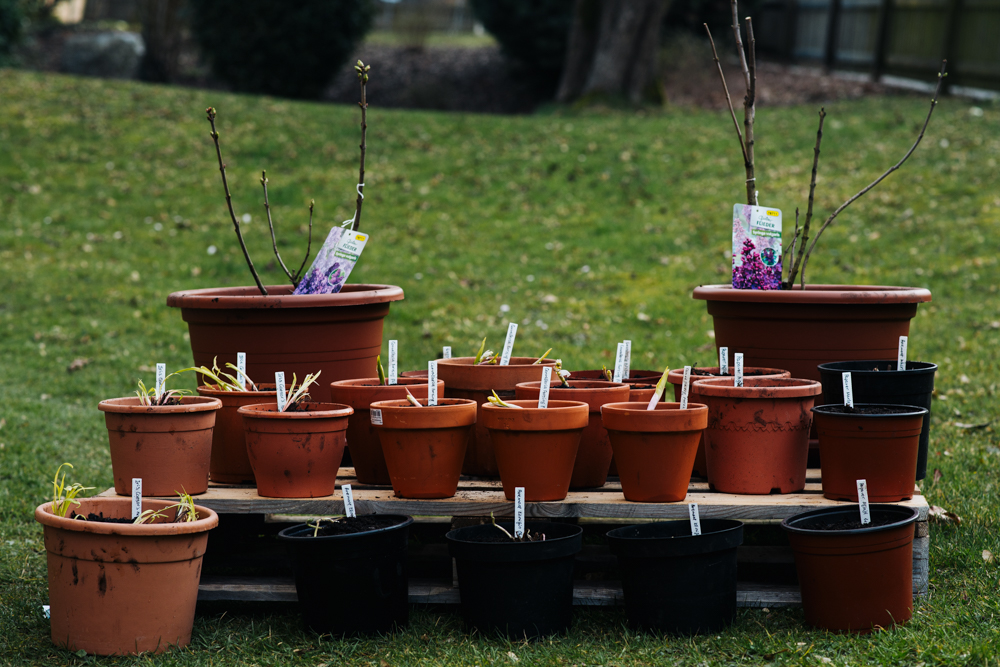Your cart is currently empty!
Category: Perennials

Perennials
Perennials are an important part of the plant world because they have unique characteristics that allow them to survive adverse conditions and delight with their beauty or usefulness for many years. They do not die after one cycle of flowering and fruiting, like annual or biennial plants, and are able to survive several growing seasons.
Main characteristics of perennial plants
- Long life cycle: Can live for decades or even centuries
- Ability to overwinter: Most often, perennials have underground organs (rhizomes, bulbs, tubers) that are preserved in winter, and in the spring the plant grows back
- Diversity of speciesAmong them are herbs, shrubs and trees.
- Easy to care for: They require less effort in terms of planting and replanting, as they do not need annual sowing.
Perennials are widely used in gardening due to their ability to decorate the garden for a long time without the need for annual replanting.
Perennials are a large group of plants, in the wild perennials form the basis of most ecosystems, including forests and steppes.
Examples of perennial plants:
- Flowers: peonies, irises, lilies, roses, lilies of the valley
- Shrubs: lilac, currant, rosemary
- Trees: oak, maple, apple.
- Vegetables: asparagus, rhubarb.
- Herbs: mint, lemon balm, thyme.
Benefits of Growing Perennials
- Durability: Once planted, they can live for years without replanting.
- Saving time and resources: Do not require annual sowing
- Variety of colors and shapes: Perennials offer a wide variety of plants for any type of garden.
- Winter hardiness: Many of them are adapted to harsh winters
- Pest resistance: Often less susceptible to disease than annuals
Planting perennials
- The best time to plant perennials is spring or fall.
- It is necessary to take into account the plant's preferences for sun, shade and soil type.
- Soil preparation:
- Dig the area to a depth of 10 to 30 cm, depending on the type of plant, remove weeds and add organic fertilizers.
- Digging a hole:
- The hole should be slightly wider and deeper than the root ball of the plant.
- Planting:
- Position the plant so that the root collar (the place where the stem meets the roots) is at ground level.
- Cover the roots with soil, tamp lightly and water.
- Distance between plants:
- Allow enough space for growth, usually between 20 and 50 cm, depending on the plant species.
Caring for perennial plants
- Watering
- Regular watering is necessary in the first year after planting. Once established, most perennials become drought-resistant.
- Top dressing
- In spring, it is recommended to use nitrogen-rich fertilizers for active growth.
- In autumn, phosphorus and potassium fertilizers are suitable for strengthening the root system.
- Trimming
- Faded flowers and dead leaves should be removed promptly to stimulate further growth.
- In the spring: Remove old foliage and dead stems to encourage growth.
- In summer: Cut off faded flowers to prolong flowering.
- In the fall: Prune the above-ground portion of herbaceous perennials (if necessary).
- Wintering
- To protect against frost, plants can be mulched, covered with spruce branches or agrofibre.
Tips for Successful Growing
- Renew your plantings regularly:
- Some perennials (such as irises) require division every 3 to 5 years to maintain health and abundant flowering.
- Mixed plantings:
- Combine perennials with different bloom times for a continuous decorative effect.
- Protection from pests and diseases:
- Prevention: observe crop rotation, remove plant debris in the fall.
- Use biological or chemical agents if necessary.
We wish you successful planting! May your garden delight you with its beauty and lush flowering!
We will be happy to answer your questions if any. Just leave your comment below the article.
